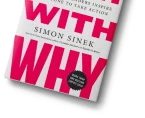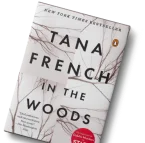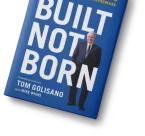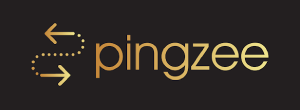
For most authors, author social media marketing feels like an ignorable chore—something you should be doing, but don’t really know how or why. You might wonder if it’s even worth it when you’d rather be writing.
Here’s the truth: social media can be one of the most powerful tools in your author marketing toolkit—but only if you approach it with clarity and intention. You don’t need to be on every platform. You don’t need to go viral. And you definitely don’t need to spend hours a day online. You just need to show up in a way that’s authentic, strategic, and aligned with your readers.
In this guide, we’ll walk through the exact steps to start using social media as an author—without burning out or losing your voice. You’ll learn how to choose the right platform, build a simple posting rhythm, and create content that genuinely connects with your audience.
Let’s begin with one of the most common questions authors ask:
Which social media platform should I even use?
Turn Followers into Book Buyers
We craft social media campaigns that boost visibility, grow your author brand, and drive book sales—one post at a time.
Boost Your Social Presence1. Choose the Right Social Media Platform for Your Genre and Goals
Before you create a single post for your author social media marketing, you need to know where you’re going to focus your time and energy. Social media marketing for authors doesn’t work if you’re spreading yourself thin across five different platforms. The most effective author platforms start by choosing one primary channel that aligns with your genre, ideal reader, and content style.
Let’s break down the strengths of each platform and which types of authors tend to thrive there:
Instagram for Author Social Media Marketing
- Best for: Fiction authors, romance, fantasy, YA, memoir
- Why it works: Instagram is highly visual and emotionally engaging—perfect for storytelling and aesthetic content like book covers, quotes, and writing spaces.
- Popular formats: Reels (short videos), carousels, quotes, live Q&As, stories
Instagram is one of the most effective platforms for author social media marketing. Readers follow authors they feel emotionally connected to, and this platform excels at creating that connection through visuals, captions, and storytelling.
TikTok (BookTok) for Authors
- Best for: YA, romance, fantasy, indie authors with visually appealing books
- Why it works: TikTok’s “BookTok” community has become a powerhouse for viral book recommendations and organic discovery.
- Popular formats: “Books that made me cry,” “If you liked X, read this,” writing updates, and reader reaction videos
If you’re comfortable on video and have time to engage consistently, TikTok can be game-changing. Many indie authors have seen massive sales spikes after just one viral video. TikTok also rewards storytelling and vulnerability—traits authors naturally have.
Facebook for Authors
- Best for: Nonfiction authors, historical fiction, older audiences, niche communities
- Why it works: Facebook still dominates when it comes to reader groups, event promotions, and long-form discussion.
- Popular formats: Group posts, live readings, polls, articles, discussion threads
Facebook isn’t the trendiest platform, but it’s one of the best for building deep connections—especially through private reader groups. If your audience is 35+, this may still be your strongest channel.
LinkedIn for Nonfiction and Business Authors
- Best for: Thought leaders, entrepreneurs, coaches, consultants
- Why it works: LinkedIn allows you to share insights and build credibility in professional circles. It’s where decision-makers and podcast hosts hang out.
- Popular formats: Storytelling posts, listicles, short essays, carousel PDFs
If your book ties into your career or expertise, LinkedIn is more powerful than you think. It’s less noisy than Instagram and more focused on authority and reputation building.
X (Twitter) for Authors
- Best for: Poets, literary fiction, sci-fi/fantasy, authors who enjoy conversation
- Why it works: X is about short bursts of thought and fast-moving conversations. While its reach has declined, it’s still relevant in writing communities and publishing news.
- Popular formats: Threads, quotes, memes, questions, live event coverage
X is great for building peer relationships with other authors, journalists, and editors—but it requires high engagement and frequent posting to stay relevant.
So… which platform should you choose?
Ask yourself:
- Where does my ideal reader spend time?
- Which platform matches my content style (visual, video, written)?
- Where do I enjoy showing up most consistently?
You only need to commit to one primary platform to start. Once you’ve mastered it, you can always expand or repurpose your content elsewhere for author social media marketing.
Social Media That Sells Books
From Instagram reels to author Q&As, we help you connect with readers where they scroll the most.
Start Your Campaign2. Set Up or Audit Your Author Profile
Your social media profile is your digital handshake and plays an important role in author social media marketing. It’s the first impression a potential reader gets—and it only takes a few seconds for them to decide whether they want to follow you, click your link, or keep scrolling.
Whether you’re setting up a new profile or optimizing an existing one, this section will help you create an author bio that builds trust, reflects your brand, and encourages engagement.
Profile Photo: Use a Clear, Approachable Headshot
Your profile picture should look like you—not your cat, not your book cover, and definitely not a blurry selfie from 2016. Readers want to connect with a human. Use a high-resolution, smiling or neutral-friendly photo that aligns with your author brand. If you write horror or dark fantasy, a moody black-and-white shot might be appropriate. For romance or inspirational nonfiction, go for warmth and clarity.
Username & Handle: Make It Searchable
Your handle should include your author name if possible. Avoid numbers, underscores, or obscure phrases. If your name is taken, try:
- @AuthorYourName
- @YourNameWrites
- @BooksByYourName
This keeps your profile easy to find when someone searches for you on or off the platform.
Bio: Hook Readers with a Clear, Compelling Line
Think of your bio like back cover copy—it’s short, strategic, and reader-focused. The best author bios on social media tell users:
- What you write
- Who it’s for
- Why they should follow you
Example bio (fiction):
Romance author writing small-town love stories with a twist 💌 | Book 3 out now!
Example bio (nonfiction):
Helping creative entrepreneurs beat burnout + grow their income | Author of “Burn Bright”
Bonus tip: Add a personal touch—your coffee obsession, your dog’s name, your “plotting in pajamas” lifestyle. Readers love these little human signals.
Another Bonus For You: How Indian Authors Can Monetize Public-Domain Works Responsibly
Link in Bio: Optimize for Action
Social media platforms only allow one clickable link in your profile. Make it count.
If you have multiple things to promote—like a new book, email signup, and media kit—use a bio link tool like:
- Linktree
- Beacons
- Koji
Organize it like this:
- “Start with my newest book” (Amazon or sales page link)
- “Get a free story” (email signup lead magnet)
- “About me & press kit” (author website)
Always place the most important link first and update your links when launching a new book or campaign.
Visual Branding: Make Your Page Cohesive
Consistency builds trust. Use the same color palette, tone of voice, and bio photo across platforms. If you’re using Instagram, consider using templates for post designs so your grid looks polished and aligned with your genre.
Tools like Canva, Styled Stock Society, or Creative Market make it easy to create branded graphics—even if you’re not a designer.
A great author profile answers the question: “Is this someone I want to follow or read?”
Once your profile is solid, you’re ready to start posting with purpose—and that’s exactly what we’ll cover next.
Build Your Author Platform
We design content calendars, author graphics, and engagement strategies tailored to your genre and readers.
Build Your Online Presence3. Build a Simple Weekly Posting Plan
Now that your author profile is set up and optimized, the next step is to build a posting rhythm you can actually stick to. The biggest mistake authors make on social media is inconsistency—not because they’re lazy, but because they’re overwhelmed. A clear, repeatable plan takes the guesswork out of what to post and helps you show up with purpose.
You don’t need to post daily to grow your presence. In fact, three to four intentional posts per week are more than enough to gain traction, especially if you’re engaging with your audience in the comments and stories.
Here’s how to create a weekly plan that’s both strategic and sustainable.
Choose 3 to 4 Content Pillars
Think of content pillars as themes that your posts will revolve around. These pillars should reflect your author brand, your books, and your personality. Choose three to four that you feel confident showing up for regularly.
Examples of content pillars for authors:
- Behind-the-scenes of your writing process
- Reader-focused content (recommendations, reviews, polls)
- Book promotion and updates
- Personal or relatable content (writing struggles, routines, hobbies)
- Educational or inspirational posts (writing tips, publishing advice)
Once you know your pillars, rotate through them during the week. This keeps your feed varied, balanced, and valuable to your audience.
Sample Weekly Schedule
Here’s an example of how a new or indie fiction author might schedule their posts:
- Monday: Writing update with a photo of your workspace
- Wednesday: Share a short excerpt or teaser from your book
- Friday: Recommend a book in your genre or celebrate a fellow author
- Sunday (optional): Share something personal—your weekend routine, a favorite quote, or something unrelated to writing
If you’re nonfiction, your structure might lean more toward value-driven or insight-based content:
- Monday: Quick tip or insight related to your book’s topic
- Wednesday: Share a behind-the-scenes look at your writing process
- Friday: Feature a reader testimonial, review, or related resource
You can schedule your posts weekly using tools like Later, Buffer, or Metricool—or simply set aside 30 minutes every Sunday to draft and queue your content.
Batching and Repurposing for Efficiency
Don’t try to create a brand-new idea every single day. Instead, batch your content. Set aside one or two hours a week to create all of your content at once. Use templates to design graphics, reuse quotes or tips from your book, or pull short clips from longer blog posts or podcasts.
You can also repurpose your content across platforms. A caption written for Instagram can be edited into a tweet or turned into a short video for TikTok. You’re not repeating yourself—you’re reinforcing your message.
A weekly content plan not only saves time—it builds trust. When your audience sees you show up consistently with content that speaks to them, they’re more likely to stay connected, support your work, and eventually become loyal readers.
Next, we’ll explore what kinds of posts actually get engagement and help authors grow.
Content That Sparks Engagement
We help authors post with purpose—turning readers into fans through engaging captions, visuals, and stories.
Craft My Strategy4. What to Post: 10 High-Engagement Ideas for Authors
One of the hardest parts of social media for authors isn’t deciding if you should post—it’s figuring out what to post that actually connects with readers. The good news? You don’t need to constantly promote your book. In fact, most of your content should focus on building trust, sparking interest, and creating conversation.
Here are ten types of posts that consistently generate engagement for authors across platforms:
1. Behind-the-Scenes of Your Writing Process
Readers love to see how the stories they enjoy come to life. Share your drafting rituals, word count struggles, character sketches, or photos of your writing space. Let people into your process—it makes them feel invested before the book is even finished.
2. Short Excerpts or Teasers from Your Book
Pull a compelling or emotional line from your manuscript and share it as a post. For extra engagement, ask a question afterward: “Would you keep reading?” or “Whose POV do you think this is?”
3. Cover Reveals or Title Announcements
Milestones like a new book title or cover are great moments to share with your audience. Build anticipation by showing early concepts or asking readers to vote between options.
4. Reader Reviews and Testimonials
When readers say something kind about your book, showcase it. Turn a positive review into a visual post or quote card. This builds social proof without sounding like you’re bragging.
5. Writing Tips and Tools You Use
If your audience includes other writers, share helpful insights. Talk about your outlining method, your favorite software (like Scrivener or Notion), or how you overcame writer’s block last week.
6. Book Recommendations in Your Genre
Authors who promote others often get promoted in return. Share a recent read you loved and tag the author. Readers appreciate curated suggestions, and it positions you as someone who knows the genre.
7. Book Stack or “What I’m Reading” Posts
Snap a photo of your current reads, your bookshelf, or a themed book stack (for example: “Books I Wish I Wrote”). These posts are visually appealing and easy conversation starters.
8. Personal Stories or Vulnerable Moments
Sharing your writing struggles, your “why,” or a moment of doubt makes you relatable. Readers connect with real people, not polished brands. Use discretion, but don’t be afraid to show the human behind the book.
9. Polls, Questions, and Interactive Posts
Ask your audience to weigh in: “Which genre should I try next?” or “What makes you pick up a book in a store?” Engagement breeds visibility, and the responses can give you valuable insights.
10. Launch or Countdown Posts
In the final weeks before a new book release, use a countdown to build momentum. Try a series like “10 Days of Teasers” or “5 Secrets About the Main Character.” Each post brings readers one step closer to your launch.
You don’t have to use all ten every week. Start with two or three that feel natural to you and rotate them. Keep a running list of ideas in your phone or a Notion board so you’re never stuck staring at a blank screen.
Go Viral with Your Voice
Let our social media experts amplify your book message and help you trend on the right platforms.
Let’s Go Viral5. How to Grow Your Audience Without Feeling Fake
If posting consistently is step one, growing your audience is step two. But many authors feel conflicted here. You want readers to find you, but you don’t want to chase attention or feel like a salesperson.
The key to authentic growth is remembering this: you’re building relationships, not just reach. When you show up genuinely, add value, and interact with your community, growth happens naturally—without the pressure to go viral.
Here’s how to grow your author audience in a way that feels real and sustainable:
Engage Before You Promote
Social media is not a broadcast channel—it’s a conversation. If you want people to care about your posts, show them you care about theirs. Spend 10–15 minutes a day:
- Commenting on reader or writer posts
- Responding to your followers’ replies and messages
- Liking and sharing content from other authors in your niche
When you engage first, your posts are more likely to be seen and supported in return.
Use Hashtags Strategically
Hashtags help new readers discover your content. Don’t overdo it—five to ten well-chosen tags are enough. Mix broad hashtags like #amwriting or #bookstagram with niche ones like #cozyromance, #YAthriller, or #indieauthors.
If you write nonfiction, try tags that focus on the problem your book solves: #burnoutrecovery, #personalgrowth, or #freelancewritingtips.
Look at what successful authors in your genre are using, and start there.
Collaborate With Other Authors
One of the fastest ways to grow your reach is by tapping into someone else’s audience. Team up with other authors for:
- Joint giveaways
- Newsletter swaps
- Live Q&A sessions on Instagram or Facebook
- Shared challenges (like a 7-day writing sprint)
You don’t need a big following to collaborate—just be professional, kind, and consistent. Supporting others often leads to unexpected opportunities and long-term connections.
Be Patient, Be Consistent
Social media growth takes time. Focus on showing up with value, being true to your voice, and building relationships. It’s better to have 300 highly engaged followers who love your books than 3,000 who scroll past your content.
Growth without burnout is possible when you approach it with a long-term mindset. You’re not chasing likes—you’re building a loyal community of readers who want to go on this journey with you.
Turn Scrolls into Sales
Your readers are online—so should your book be. We craft author-focused social media strategies that sell without sounding salesy.
Get Your Book Noticed6. Tools and Apps to Make Social Media Easier
Social media doesn’t have to eat up your writing time. With the right tools, you can schedule posts, design visuals, and monitor what’s working—all without being glued to your phone.
Here are the best tools to simplify your social media workflow as an author:
Scheduling Tools
Batch your content once a week and use a scheduler to post it automatically.
- Later – Visual calendar for Instagram, Facebook, and Twitter
- Buffer – Simple and intuitive across multiple platforms
- Metricool – Offers analytics, planning, and publishing in one dashboard
Design Tools
Create professional-looking graphics, quote cards, and promo images.
- Canva – Easy drag-and-drop editor with author templates and book mockups
- Book Brush – Built specifically for authors to create ads and teaser images
Link in Bio Tools
If you’re promoting multiple things—books, freebies, events—use a landing page tool.
- Linktree
- Beacons
- Koji
These tools help readers navigate your content without overwhelming your bio.
Analytics Tools
Track what’s working and adjust accordingly.
- Instagram and Facebook have built-in insights
- Metricool and Later provide more detailed cross-platform analytics
Track simple metrics first: engagement rate, link clicks, and follower growth. Don’t obsess over vanity metrics—focus on what drives actual results (like email signups or book sales).
Social media is easier to manage—and more effective—when you use tools to handle the heavy lifting. Let automation support your creativity, not replace it.
Start Your Author Brand Journey
We don’t just market books—we build author brands. Grow your visibility, trust, and loyal readership with our expert support.
Launch Your Author BrandConclusion
Social media marketing doesn’t have to be overwhelming, inauthentic, or time-consuming. By focusing on the right platform, showing up with purpose, and posting content that genuinely adds value, you can grow a community of readers who support your books and your voice.
Start by choosing one platform that fits your genre and your comfort zone. Build a simple posting rhythm around your brand. Share real moments, celebrate milestones, and connect with your audience like you would with a friend—not a follower count.
And if you want to make it even easier? Use tools to batch, schedule, and streamline the process so you can get back to what matters most—writing great books.
If you’re ready to take this to the next level, the next step is mastering your email marketing strategy. That’s where your most engaged fans will follow you long after the algorithm forgets your name.
Let’s talk about how to grow and nurture your reader email list in a way that supports every book you write.






























